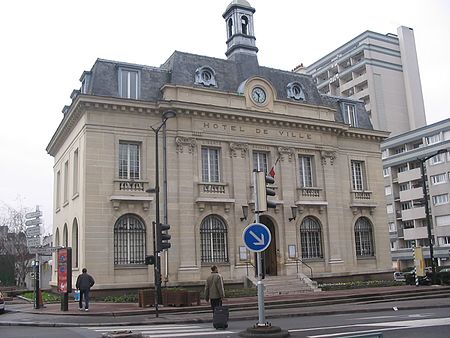L'Île-Saint-Denis
Communes of Seine-Saint-DenisSeine-Saint-Denis geography stubs

L'Île-Saint-Denis (French pronunciation: [lil sɛ̃ dəni] (listen), locally [lil sɛ̃ d(ə)ni]; lit. 'Saint Denis Island') is a French commune in the northern suburbs of Paris, Île-de-France. It is located 9.4 km (5.8 mi) from the center of Paris. The commune is entirely contained on an island of the Seine River, hence its name. Along with the communes of Saint-Denis and Saint-Ouen-sur-Seine, L'Île-Saint-Denis will form the Olympic Village of the 2024 Summer Olympics. This allows 85% of athletes to be 30 minutes from their competition venues.
Excerpt from the Wikipedia article L'Île-Saint-Denis (License: CC BY-SA 3.0, Authors, Images).L'Île-Saint-Denis
Rue Pierre Brossolette, Arrondissement of Nanterre
Geographical coordinates (GPS) Address Phone number Website Nearby Places Show on map
Geographical coordinates (GPS)
| Latitude | Longitude |
|---|---|
| N 48.9333 ° | E 2.3333 ° |
Address
MJC - Espace Pierre Brossolette
Rue Pierre Brossolette 3
92390 Arrondissement of Nanterre
Ile-de-France, France
Open on Google Maps








